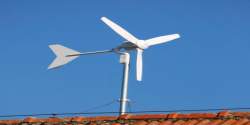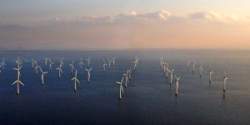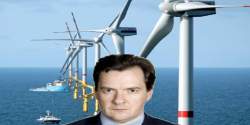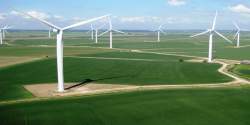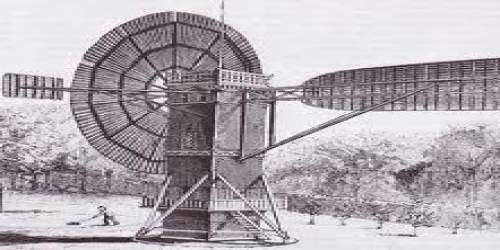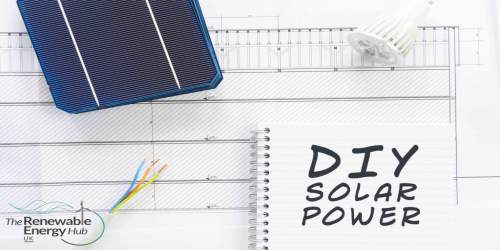Read Time : 4 Minutes
How a Wind Turbine works
How Does a Wind Turbine Work?
Wind turbines work on a very simple principle: the wind turns the blades, which causes the axis to rotate, which is attached to a generator, which produces DC electricity, which is then converted to AC via an inverter that can then be passed on to power your home. The stronger the wind, the more electricity is generated from the motion. That’s why we tend to see industrial scale wind farms with high towers and large blades located in the breeziest parts of the countryside, including offshore.
A turbine’s efficiency comes from how well it captures the power of the wind and turns it into a rotational torque that can then push electrons out from the generator and into the grid. The towers are normally made of steel but the blades can be manufactured from glass fibre or reinforced polyester that need to be strong yet light enough to turn in the wind. A single 1.8 MW wind turbine running at normal capacity will produce enough electricity in a year to feed 1,000 average homes. The Whitelee Wind Farm in Scotland has 140 turbines that provide electricity for around 180,000 homes.
COMPARE PRICES FROM LOCAL INSTALLERS
Compare prices from local companies fast & free
Enter your postcode to compare quotes from leading professionals. We promise to keep your information Safe & Secure. Privacy Policy
How a Wind Turbine Creates Electricity
The core component of a wind turbine is the generator which converts mechanical energy into electricity. We’ve known since the early 19th century that if you turn a conductor in a magnetic field then it creates electricity, according to Faraday’s Law. So the wind provides the movement and torque and the generator does the rest. For an industrial scale turbine, like the ones you see on wind farms, there will normally be an anemometer that is attached to a control panel.
The turbine is activated at wind speeds of over 8 miles per hour but the machine is shut off with speeds in excess of 55 mph to prevent damage. The gear box is used to change the slow motion we see from the blades turning to the faster motion of the axis which actually drives the generator. This is one of the most costly parts of the wind turbine, changing speeds of 30 to 60 revolutions per minute into a thousand rpm. It’s one of the areas that researchers and developers are looking to make more efficient so that a greater current of electricity can be produced at slower speeds.
To cope with varying wind directions, a yaw drive is often used to move the blade array into the oncoming wind. The generator produces an AC current that is fed into the grid and used to power the surrounding homes.

Industrial Wind turbine components diagram
Domestic Wind Turbines
As with solar panels, domestic wind turbines need the right components to supply your house with electricity. The generator will produce a DC current that has to be converted into AC by an inverter and there are batteries that can be used to store energy for later use. Find out more about the electronics of domestic wind turbines. How Much Electricity Do Wind Turbines Create? To power a domestic home you need a substantially sized wind turbine. Even average sized wind farms they are large and very noticeable with perhaps as many as 40 or 50 huge turbines working hard to produce electricity.
The newest and largest wind farm in the world has just received government approval in the UK. Situated 45 miles off the coast of Kent, the East Anglia One offshore wind farm will have 240 turbines producing some 1,200 MW of electricity. Gwynt y Môr off the coast of North Wales is currently the largest offshore wind farm in the UK. Still under construction, half its 160 turbines are now operational and it is expected that the completed farm will provide enough electricity for about 400,000 homes.
If you want a wind turbine installed for domestic use then you really need to have a remote location where other buildings and infrastructure won’t get in the way. There are two different types of domestic wind turbine: Roof mounted and free-standing. The idea of putting a wind turbine on your roof seems like a good idea but the problem is that these don’t produce enough power to make you truly independent of the grid and produce all your own power. You get more output from a free-standing wind turbine that operates similarly to the ones you see in wind farms.
The downside of free-standing turbines is that they cost more – a building mounted turbine would set you back around £2,000 whilst a free-standing could cost anything from £20,000. The truth is that wind power is currently more viable for those in a remote location (that is outside of urban and suburban areas) that has a good, strong and steady wind source. The size of the array needed to produce enough electricity for domestic use is often too prohibitive for anyone else. However, much research and development is being undertaken to make wind power more effective and there may be turbines in the future that can be used in our cities and towns in much the same way as solar power is today. For a look at the future of wind turbine technology take a look at our blog for an update.
Typical small scale turbine installation
In conclusion
Wind turbines have proven to be a remarkable and sustainable solution in harnessing the vast potential of wind energy. Throughout this exploration of how wind turbines work, it becomes evident that these innovative structures play a pivotal role in the global transition toward cleaner and more renewable energy sources.
As we have seen, the fundamental principle behind wind turbine operation lies in converting kinetic energy from wind into mechanical energy through the rotating blades. The aerodynamic design and precise engineering of these blades enable efficient capturing of wind energy, while advanced control systems optimize their performance and ensure safe operation.
Modern wind turbines have overcome significant challenges to enhance their efficiency, reliability, and environmental impact. Innovations in materials, blade design, and gearbox technology have resulted in increased energy production, reduced maintenance costs, and extended operational lifespans. Moreover, the integration of smart technologies, such as data analytics and machine learning, has enabled wind farm operators to maximize output and anticipate maintenance needs, further enhancing their economic viability.
Wind power's environmental benefits cannot be overstated. Wind turbines produce no greenhouse gas emissions during operation, making them a key player in mitigating climate change and reducing air pollution. Their minimal land footprint allows for coexistence with other land uses, supporting sustainable development and biodiversity conservation.
The impressive growth of wind energy across the globe showcases the remarkable potential of this renewable resource. Governments, corporations, and individuals are increasingly recognizing the importance of investing in wind energy infrastructure to diversify energy portfolios and combat the challenges posed by finite fossil fuels.
However, challenges remain. Addressing issues such as intermittency, storage, and grid integration will be crucial to maximizing wind power's potential. Continued research and development are essential to make wind energy even more cost-effective and scalable, ensuring its role as a cornerstone in the global energy mix.
In conclusion, wind turbines exemplify humanity's ability to harness nature's power in an environmentally friendly and sustainable way. With ongoing advancements and commitment to a renewable energy future, wind turbines will continue to play a vital role in building a cleaner, greener, and more resilient world for generations to come. Embracing wind power represents not only a technological achievement but also a collective step toward a brighter and more sustainable future for our planet.
Find a local installer
Welcome to the biggest directory of UK renewable energy companies
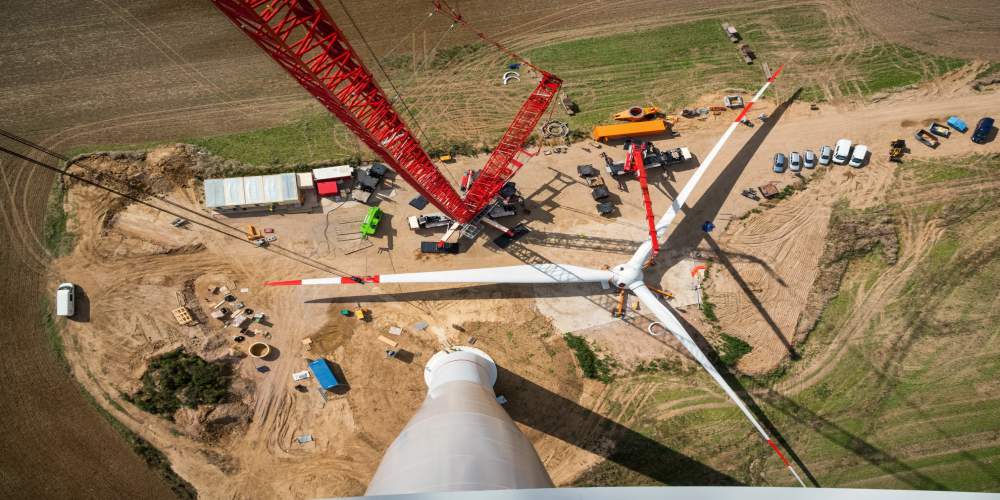





 How a Wind Turbine works
How a Wind Turbine works